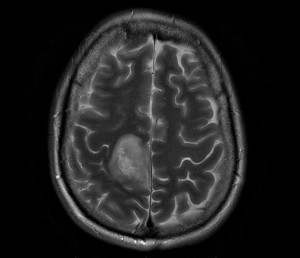Although epidermoid brain cysts are usually benign not cancerous and slow growing the cysts may grow around and encase cranial nerves and arteries. What is a benign brain tumour.
 Benign And Malignant Brain Tumors What You Need To Know Brain Health Cancer Care Health Topics Neuroscience Hackensack Meridian Health
Benign And Malignant Brain Tumors What You Need To Know Brain Health Cancer Care Health Topics Neuroscience Hackensack Meridian Health
If the tumor is close to the skin or in.

Benign brain mass. Brain tumors can be cancerous malignant or noncancerous benign. It often depends on whether the surgeon is able to safely remove all of the tumour. Most benign brain tumors are found by CT or MRI brain scans.
What is a benign brain tumor. Thus epidermoid brain cysts are most often diagnosed in middle-aged adults when the cysts have grown large enough to cause symptoms. Doctors sometimes discover these growths by happenstance.
Severe headaches upon waking can be a symptom of a brain tumor. A benign brain tumor is not as deadly as a malignant tumor but is still a very serious medical issue as the tumor can grow and put pressure on other parts of the brain explains MedicineNet. Our goal was to see if this has improved in the CT era.
These tumors originate from the meninges the membrane-like structures that surround the brain and spinal cord. Cancerous tumors can be divided into primary tumors which start within the brain and secondary tumors which most commonly have spread from tumors located outside the brain known as brain metastasis tumors. Generally brain tumours are graded from 1 to 4 according to their behaviour such as how fast.
It will not usually come back if all of the tumour can be safely removed during surgery. An imaging specialist might find a tumor while reviewing a patients images after a car accident for example. Meningiomas are brain tumors that develop from the membrane the meninges that covers the brain and spinal cord.
Depending on the location possible symptoms of benign tumor growth are. Benign brain tumors are mysterious health occurrences that we cant fully explain. For example if you have a benign tumor in the brain then you can experience headaches vision problems chaotic memory and so on.
Cancerous malignant tumors and benign non-cancerous tumors. If the tumor grows close to the skin or in areas of soft tissue such as the abdomen the lump or mass may be felt by touch. Meningiomas are the most common benign intracranial tumors comprising 10 to 15 percent of all brain neoplasms although a very small percentage are malignant.
But although the symptoms of most brain tumors are the same not all tumors are malignant. We reviewed hospital charts of all patients admitted to the Johns Hopkins Hospital with a brain. A brain tumor diagnosis can sound like a life-threatening situation.
Benign non-cancerous brain tumours can usually be successfully removed with surgery and do not usually grow back. In fact meningioma is the most common brain tumor accounting for about 30 percent of them. Brain mass lesions are a broad collection of pathological processes that result in changes on brain imaging usually CT or MRI.
They are the most common primary brain tumor in adults. Malignant and benign non-cancerous brain tumors have similar symptoms. A benign non-cancerous brain tumour is a mass of cells that grows slowly in the brain.
They are a very disparate group of conditions ranging from infection abscess to brain tumors benign and slow-growing metastatic or primary high-grade brain tumor. It usually stays in one place and does not spread. There are two main types of tumors.
When benign or malignant tumors grow they can cause the pressure inside your. If theres some left it can either be monitored with scans or treated with radiotherapy. The difference between the two is that malignant tumors are cancerous and can spread rapidly into other parts of the brain sending cancerous cells into surrounding tissue.
A benign non-cancerous brain tumour is a mass of cells that grows relatively slowly in the brain. They can cause seizures or cause neurologic problems such as paralysis and speech difficulties. For example if you have a benign brain tumor you may experience headaches vision trouble and fuzzy memory.
A benign brain tumor is a growth that originates in the brain but does not invade the surrounding tissues and is not considered cancerous says WebMD. Non-cancerous brain tumours tend to stay in one place and do not spread. Most meningiomas 85-90 percent are categorized as benign tumors with the remaining.
Data from the era before computed tomography CT suggests that 3 of patients with brain tumors are initially thought to have had a stroke. Discriminating brain tumor from stroke in patients presenting with acute focal neurologic signs and symptoms is crucial to avoid improper treatment or delay correct treatment of the brain tumor patient. Benign brain tumors are usually defined as a group of similar cells that do not follow normal cell division and growth patterns and develop into a mass of cells that microscopically do not have the characteristic appearance of a cancer.